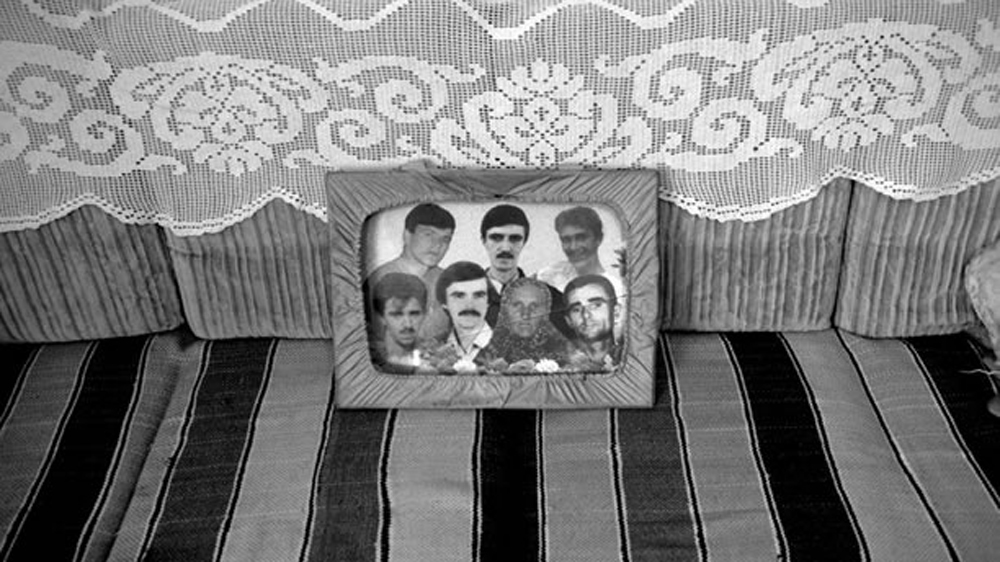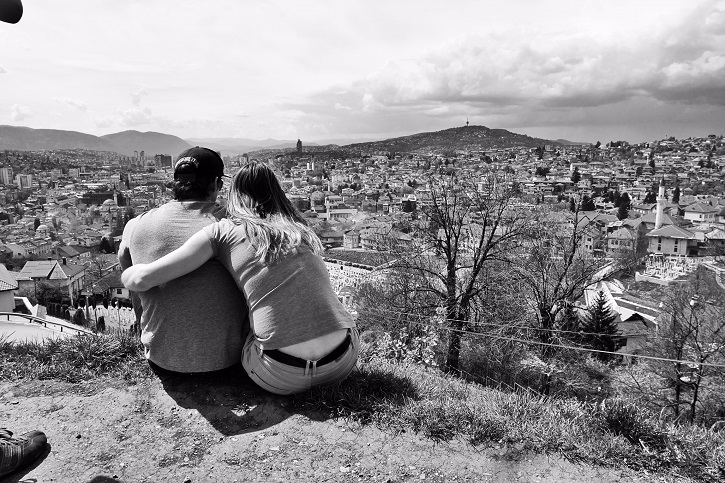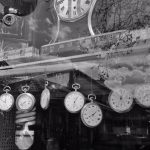Let me say that again. Sarajevo: It’s complicated.
I’ve longed to visit this city for ages, because of the cultural fascination I have for the war and their struggles in rehabilitative efforts since the Siege of Sarajevo ended in 1995. But knowing what went down and being here, well, those are two very different scenarios.
In a total fluke, I’ve come just a week after the anniversary marking 25 years since the Siege began. 25 years ago, I was underage and sneaking into Frank’s to drink with my college classmates in my journalism program. It would be year or more before the horror of the Balkan scenario even registered with me. I shake my head at that now.
Stop anywhere and look around, and one is almost guaranteed to spot bullet holes in buildings, or the patching thereof. I have yet to see spots marked where mortar shells killed people, but I’m bound to do so eventually, and I know it’ll give me pause when I do.

One of the main pedestrian areas of Sarajevo, the intersecting malls in front of the Cathredral.
We Are Their Witnesses
Yesterday, I went to a gallery memorializing the 8,372 killed in the Srebenica genocide. There’s a wall, about 20-30 metres long, filled with their names. I stood looking down the hall, to where I couldn’t even make the print out anymore. The realization hit that every one of those killed in the genocide had family, dreams, and expectations of a life that wouldn’t end in a methodical extermination and their corpses in mass graves.

The wall of remembrance with all the names of the dead from that one site of genocide in the Bosnian war. It just goes until the end of the hall, on and on.
It’s hard to comprehend the vile loathing shown in that war. We hear of our “better angels” at times, but we silently ignore out “greater demons”. I fear something exists in all of us that we hope is never triggered. I say I “fear” because I hope I’m wrong, and that some of us could never be corrupted and compromised to the point of, say, Nazis, or those committing atrocities in Bosnia. Because some did things then I believe they’d never have done had that war not inflamed centuries of simmering conflict.
That Srebenica memorial, the Galerija 11/07/95, affected me deeply. The digital audio “guide” had the photographer/gallery founder Tarik Samarah explaining photos he spent over a decade of his life pursuing. (My god, the dedication he had in simply trying to preserve that history.)
Samarah opened the gallery to remind us of what we are capable of, indifferent to, and in need of remembering.

This was one of Tarik Samarah’s photos from the gallery, borrowed from an Al-Jazeera story. This woman in the collage is the mother. She lost all five of her sons in the genocide. She has put this collage in this frame, and will run errands to government sites like paying her electricity and other bills, wearing this frame as a necklace. The photos hang there on her chest, as if to remind everyone of how little a price has been paid by those who did this unthinkable thing.
The Inhumanity
One photo hit me so hard. Two mothers crouched, emotionally consumed, just a few feet from a pile of skeletons near Srebenica, which they were waiting to be removed and examined. But first the spot had to be de-mined. You see, the killers put mines under the bones so that, when someone would come to claim the bones, they’d be killed too.
How craven and unsettling. What sinister motives.
How do humans fall to these levels? How do we allow hate to bleed into us and scream out of us? And how is it possible that we abandon our humanity and ethos, and give in to these greater demons, the darkness many of us have somewhere deep down inside?

This statue is created based on the photograph caught by photographer Kristian Skeie, who wrote: “‘Nermin! come here, they will help us, we are safe’. This is roughly what Ramo said shouted to his son, in order to make him come forward. Ramos, as well as his son was exhausted. He was most likely hungry and thirsty after having walked for two days. A week earlier (On July 6th), he and his wife, Saliha Osmanovic had buried their youngest son, Edin who was killed by a grenade. They, together with over a thousand others, had been walking for two days, trying to escape from the Bosnian Serb forces who had taken Srebrenica on July 11th 1995. When Ramo screams out for his son, they have all been captured. Most of them were likely killed in what is known as the Kravica massacre. They are standing near Kamenice, not far from Kravica, around 45 minutes drive from Srebrenica.”
The Enemy of My Enemy…
Very few people have been tried or held accountable for these crimes. But then, bastards like Radovan Karadžić (the Bosnian Serb president; there are three presidents under one prime minister, and he led Bosnian Serbs and acted in collusion with Serbian aggressors) went into hiding and evaded arrest. Karadžić has finally been tried and will spend the remainder of his life in prison, results of a March, 2016 verdict. The Butcher of Bosnia, Ratko Mladić , is still in trial, but evaded capture for 14 years himself.
Today, the United Nations counts it amongst their darkest, deepest failures that they stood by and did nothing. This earned them the name “United Nothing” here. The UN long dismissed this aggression as a civil war. But it wasn’t.
Bosnia suffered this not at the hands of invading enemies but of aggressive fellow comrades. After all, Serbia was part of Yugoslavia too.
This would almost be like my Canadian home province of BC being attacked by Alberta, and them committing ethnic cleansing of my people, all because some mountains, miles, and political perspective separate us.

It’s a different time now, 25 years later. Young lovers enjoy a spring day and a panorama of Sarajevo below.
Centuries of History, 25 Years of Healing
It’s so conflicting at times, to walk around enjoying the layers of cultural history here, surrounded by oppressive reminders of the recent history. If I had to picture an image of what Sarajevo is, it’d be a person walking brazenly into a hazy but bright future, while dragging a burdensome black bag marked “OUR PAST” in the sand behind them.
Everywhere you look, signs indicate the country has moved on and embraced its future. In Sarajevo, people get along. The politicians, that’s another story; they’re a spark looking for a powder keg. But the people, though, they understand the need to live together in respect. They’re succeeding at it too.
But memorials abound. There are plaques, signs, bullet holes, and mortar detonation scars. There buildings that have yet to be torn down that once were shelled into oblivion.
Sarajevo feels almost like seeing someone who was once caught in a fire, burned, and who’s gotten on with their life, but who lives with visible scars that never let you forget what they’ve overcome.
Or that’s how it seems to me, as an outsider looking in.
So right now, I’m a little overwhelmed.
But I’m also in love.

Cultural flavour and history and clashing cultures give Sarajevo a kind of urban magic few cities really have.
Complicated but Compelling
Janine di Giovanni, author and current Middle East editor for Newsweek, wrote of pre-siege Sarajevo, saying:
“Sarajevo was this beautiful city, very cosmopolitan, multiethnic, full of wonderful people, artists and writers and poets and Serbs and Muslims and Croats, and living side by side. And then this medieval siege, and it was a medieval siege, came, and the Bosnian Serbs were on the hills lobbing in rockets and grenades and mortars.”
People will tell you the Serb-Bosnian war was entirely about ethnic cleansing, but it, too, is complicated. And Sarajevo was different from the rest of the war, because of the many different people here. I’m told it was as if people were Sarajevan first, and Bosnian/Serb/Croat/Muslim/Jew/Christian last. They wanted to save their beloved city, it wasn’t about ethnicities and race and religion. For them, it was about preserving a zeitgeist they felt worth dying for. Or that’s the gist I’ve been given thus far.
And, if so, then I get that. 72 hours in, I love this city. I wonder how it must have seemed before the filter of blood and death and loss got laid atop it. If this is how compelling it is now, then I can’t imagine.
Sarajevo’s energy is magnetic. The food scene, the cafes, the people, the places, the walkability, the nature… there’s so much to love about this small capital, and I’m ecstatic I’ll be here for another 5.5 weeks.
And will I understand anything about this rich, befuddling, enduring nation of people by the time I leave? Pfft, I doubt it. Not much.
Because… it’s complicated. But I relish the challenge of learning.

Here is the “cultural meeting point” line in Sarajevo, where it literally turns from a “Little Istanbul” into a Vienna-like quarter. It’s Ottoman becomes Austro-Hungarian, really. And I love it.


